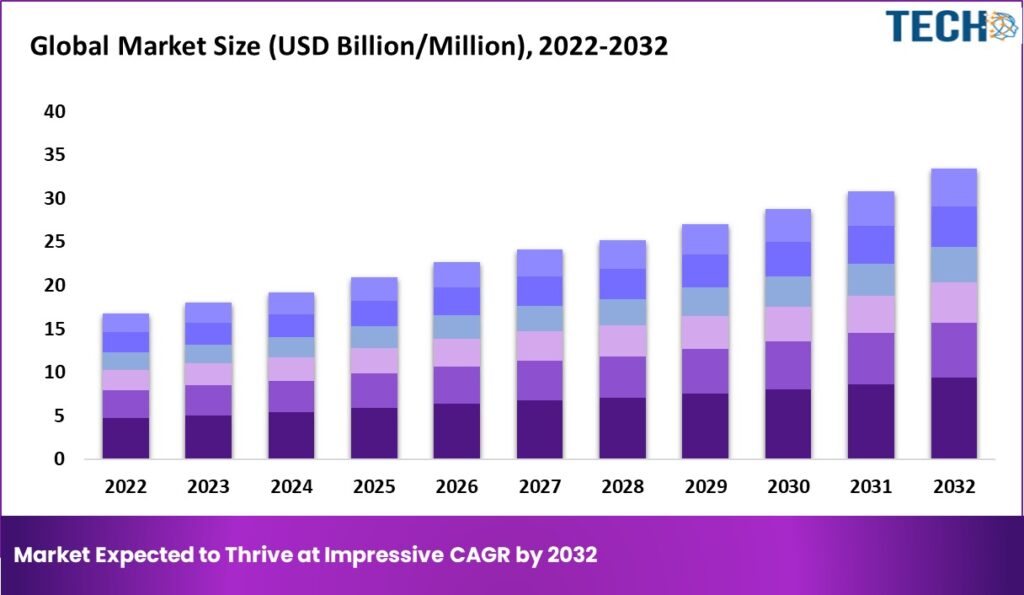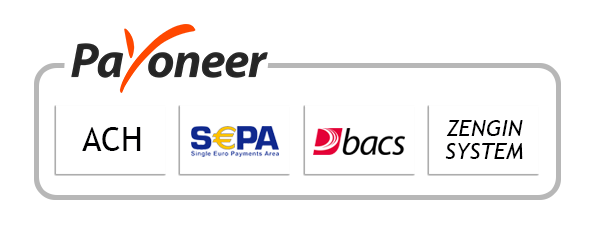
-
Report ID 138212 -
Published Date July 2023 -
Delivery Format PDF/PPT/Word -
Editor's Rating
-
Report Details
Report Overview
The AI in video surveillance market is witnessing significant growth worldwide. The market is driven by advancements in artificial intelligence technology, increasing concerns regarding security and safety, and the growing adoption of video surveillance systems across various industries. AI-based video surveillance solutions offer enhanced monitoring, real-time analytics, and automation, leading to improved security and operational efficiency.
The projected worth of the worldwide AI in video surveillance market in 2023 is USD 5.6 billion, with an estimated increase to USD 16.3 billion by 2028. This market is anticipated to experience a compound annual growth rate (CAGR) of 23.7% from 2023 to 2028. The growth of the market is being driven by the increasing demand for security and surveillance, the rising adoption of AI-powered technologies, and the growing need for data analytics in video surveillance.
The AI in video surveillance market is dominated by North America, followed by Europe and Asia Pacific. North America is the largest market for AI in video surveillance due to the high adoption of advanced technologies and the increasing demand for security solutions in the region.

Key Takeaways:
- The adoption of AI technology in video surveillance enables features such as facial recognition, object detection, and behavior analysis, enhancing the effectiveness of surveillance systems.
- Increasing investments in smart city projects and the need for advanced security solutions are driving market growth.
- North America and Asia Pacific are the largest markets for AI in video surveillance, with high demand and technological advancements.
Table 1:
World’s Largest Markets Country-wise Top Importers Country-wise Top Exporters Market Size by Country North America United States South Korea United States: USD 3.2 billion Asia Pacific China Japan China: USD 2.8 billion Europe Germany United States Germany: USD 1.5 billion Latin America United Kingdom China United Kingdom: USD 1.2 billion Market Dynamics
The following are some of the key drivers, restraints, opportunities, and challenges in the AI in video surveillance market:
Drivers:
- Increasing demand for technically advanced surveillance systems
- Rise in concerns about public safety and security
- Growing adoption of cloud-based video surveillance solutions
Restraints:
- High cost of AI-based video surveillance solutions
- Data privacy concerns
Opportunities:
- Development of new AI-based video surveillance technologies
- Expansion of the market to new regions
Challenges:
- Integration of AI-based video surveillance solutions with existing systems
- Lack of skilled professionals to deploy and manage AI-based video surveillance solutions
Top Key Players
The key players in the AI in video surveillance market include
- Hangzhou Hikvision Digital Technology Co.Ltd.(China)
- Dahua Technology Co.Ltd. (China)
- Avigilon Corporation (Canada)
- Milestone Systems A/S (Denmark)
- YITU Tech (China)
- SenseTime (China)
- Agent Video Intelligence Ltd. (US) and others.
Market Segmentation
By Offering - Hardware
- Software
- Service
By Deployment Mode - On-premises
- Cloud-based
By Use Cases - Gun Detection
- Industrial Temperature Monitoring
- Anomaly detection and Behavior Recognition
- Facial recognition/Person search
- Object detection and tracking
- Intrusion detection and perimeter protection
- Smoke and Fire Detection
- Traffic Flow Analysis/ Accident and Traffic Incident Detection
- False alarm filtering
- Parking Monitoring
- Vehicle Identification and Numberplate Recognition
By Vertical - Commercial
- Residential
- Infrastructure
- Military & Defense
- Public Facility
- Industrial
By Region - North America
- Europe
- Asia Pacific
- RoW
The AI in video surveillance market is expected to grow at a significant pace in the coming years. The increasing demand for technically advanced surveillance systems, the rise in concerns about public safety and security, and the growing adoption of cloud-based video surveillance solutions are some of the key factors driving the growth of this market.
Here are some of the key benefits of using AI in video surveillance:
- Improved security: AI-based video surveillance solutions can help to improve security by detecting and tracking suspicious activity.
- Reduced costs: AI-based video surveillance solutions can help to reduce costs by automating tasks that would otherwise be performed by human operators.
- Increased efficiency: AI-based video surveillance solutions can help to increase efficiency by providing real-time alerts and insights.
FAQs:
Q1. What is AI in video surveillance?
AI in video surveillance refers to the integration of artificial intelligence technologies, such as computer vision and machine learning, into video surveillance systems. It enables automated video analysis, object recognition, and intelligent monitoring capabilities.
Q2. How does AI enhance video surveillance?
AI enhances video surveillance by providing advanced features like facial recognition, behavior analysis, and real-time alerting. It enables proactive threat detection, reduces false alarms, and improves overall security effectiveness.
Q3. Which industries benefit from AI in video surveillance?
Various industries benefit from AI in video surveillance, including retail, transportation, healthcare, banking, and government sectors. It helps in preventing theft, ensuring public safety, monitoring critical infrastructure, and optimizing operations.
Q4. What are the key challenges in implementing AI in video surveillance?
Key challenges include data privacy concerns, high initial costs, shortage of skilled professionals, and legal/regulatory issues associated with AI-based surveillance technologies.
Q5. What are the future prospects for the AI in video surveillance market?
The AI in video surveillance market is expected to witness significant growth in the coming years, driven by technological advancements, increasing security needs, and expanding adoption across industries.
-
Table Of Content
Research Insights & Deliverables
 Development and Future Forecast
Development and Future Forecast Competitive benchmarking
Competitive benchmarking Company Revenue Statistics
Company Revenue Statistics Rising Regional Opportunities
Rising Regional Opportunities Technology Trends and Dynamics
Technology Trends and Dynamics Technology Assessment
Technology Assessment
-
Inquiry Before Buying
Research Insights & Deliverables
 Development and Future Forecast
Development and Future Forecast Competitive benchmarking
Competitive benchmarking Company Revenue Statistics
Company Revenue Statistics Rising Regional Opportunities
Rising Regional Opportunities Technology Trends and Dynamics
Technology Trends and Dynamics Technology Assessment
Technology Assessment
-
Request Sample
Research Insights & Deliverables
 Development and Future Forecast
Development and Future Forecast Competitive benchmarking
Competitive benchmarking Company Revenue Statistics
Company Revenue Statistics Rising Regional Opportunities
Rising Regional Opportunities Technology Trends and Dynamics
Technology Trends and Dynamics Technology Assessment
Technology Assessment














